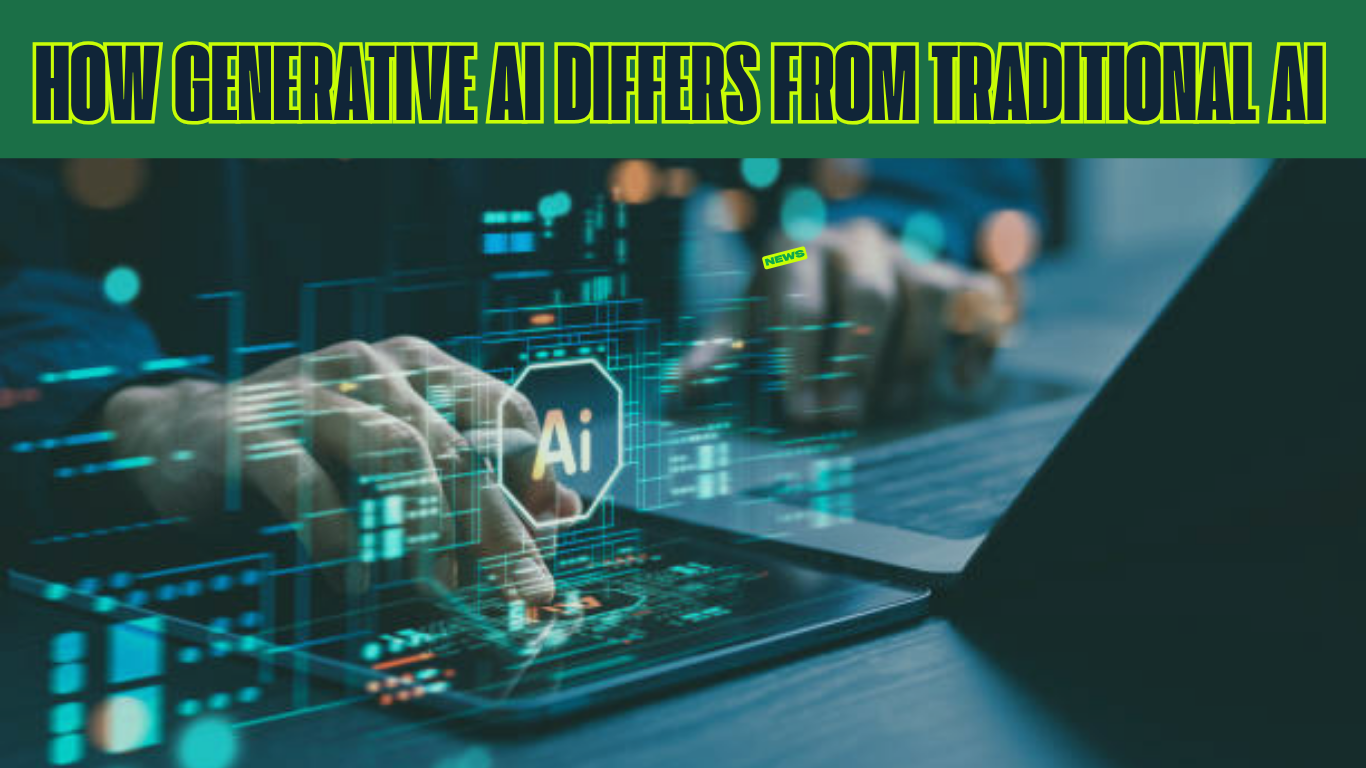Curious about what’s really happening when ChatGPT writes your email or DALL-E creates art from your text? This guide breaks down the fascinating world of generative AI for tech enthusiasts and curious beginners alike. We’ll pull back the curtain on large language models that power today’s AI revolution, explore what happens inside the AI “black box,” and tackle the surprising limitations these seemingly magical systems still face. Ready to discover how these digital brains actually work? Let’s dive in.
Table of Contents
The Secret Foundation: Understanding Large Language Models
How LLMs Power Generative AI Systems
Large Language Models (LLMs) form the backbone of today’s generative AI revolution. These sophisticated systems are essentially prediction machines that statistically model how words tend to appear together based on their training data. When you interact with ChatGPT or similar AI assistants, you’re engaging with an LLM that’s making word-by-word predictions based on your prompt.
LLMs are built using neural networks – computational systems composed of layers of neurons that perform simple mathematical functions on inputs. Each neuron’s output is weighted according to its importance compared to other neurons’ outputs. These neural networks are trained on massive amounts of data (often billions of pages from the internet) to learn the optimal weights for producing coherent, contextually appropriate text.
The “large” in Large Language Models refers to the millions or billions of parameters (weights and biases) used to generate outputs. For perspective, GPT-3 has 96 layers with 175 billion parameters, allowing it to process and generate remarkably human-like text.
The Probabilistic Guessing Mechanism Behind Token Prediction
At their core, generative AI systems are fundamentally sequence-prediction machines. They complete sequences with whatever is statistically most likely to appear next based on patterns observed in their training data.
Consider a simple example: when presented with “It’s raining cats and ____,” an LLM will likely respond with “dogs” because this pattern frequently occurs in written English. What’s fascinating is that the system doesn’t just guess one word – it produces multiple top candidates along with their relative probabilities.
The process works through tokenization – breaking text into words or word fragments (tokens) – and representing these tokens as vectors in a multidimensional space through “word embeddings.” Each token becomes a point in this abstract space, where semantically similar words are positioned close together. This vector representation allows the AI to “reason” with words by calculating the relative distances between them.
When generating text, LLMs use transformers – a special type of neural network architecture that processes inputs in parallel rather than sequentially. Transformers employ a “self-attention mechanism” where each word “knows about” all other words in the passage and their relationships, enabling the model to maintain coherence even in long texts.
Why These Models Excel at Capturing “Vibes” Rather Than Specifics
Despite their impressive capabilities, LLMs don’t truly understand the text they process. As one model candidly admitted, “I don’t understand the text I am trained on, but by looking at so many examples, I learn to mimic the style, the context, and the ‘flow’ of human language.”
This limitation stems from how LLMs represent language. The dimensions in their word embeddings are abstract representations of how words relate to each other rather than a human-understandable taxonomy of concepts. While some dimensions seem to capture grammatical purposes or semantic features, researchers don’t precisely know what each dimension encodes – making AI systems somewhat of a “black box.”
LLMs excel at capturing the “vibe” or general patterns of language rather than specific facts because they’re statistical models of language, not fact databases. They generate content by rearranging or combining pre-existing elements from their training data in ways that seem new but are fundamentally limited by what they’ve been exposed to.
This probabilistic approach explains why LLMs can produce remarkably fluent text while sometimes fabricating information or failing to maintain factual accuracy. They’re essentially mimicking human language patterns without truly comprehending the meaning behind the words – capturing style and context without genuine understanding.
Inside the AI Black Box: What We Know and Don’t Know
The neural network architecture explained simply
Neural networks are computing systems inspired by the human brain’s structure and function. At their core, they consist of three key components:
- Neurons: The fundamental units that receive, process, and transmit information. Each neuron performs computations like weighted sums of inputs followed by non-linear operations.
- Layers: Neural networks are structured in three primary types of layers:
- Input Layer: Receives initial data (like pixel values from images or encoded text)
- Hidden Layers: Perform the bulk of computations through interconnected neurons
- Output Layer: Produces the final processed information or prediction
- Weights and Biases: Connections between neurons that modulate signal strength and direction, essentially determining which information is emphasized or downplayed.
What makes neural networks particularly powerful is their ability to handle non-linear relationships. Unlike simple systems where doubling an input doubles the output, neural networks can capture complex, context-dependent patterns through activation functions like ReLU, sigmoid, or tanh.
Why even AI researchers can’t fully explain what’s happening inside
Despite creating these systems, AI researchers face significant challenges in explaining exactly what happens inside neural networks, particularly large ones used in generative AI. This interpretability challenge stems from several factors:
The collaboration between various network components creates a system where the whole is greater than the sum of its parts. While researchers understand individual components (neurons, weights, activation functions), their collective behavior creates emergent properties that weren’t explicitly programmed.
In modern neural networks with billions of parameters, the sheer scale makes comprehensive analysis virtually impossible. The networks learn patterns that are distributed across millions of interconnected parameters rather than stored in easily identifiable locations.
The millions of numbers “flipping around” that we can’t interpret
Inside a neural network, particularly advanced ones like those powering generative AI, millions or even billions of numerical parameters are constantly adjusting during training and operation. These numbers represent:
- Weight values between neurons
- Bias terms that shift activation thresholds
- Activation patterns across multiple layers
What makes these numbers so challenging to interpret is that they don’t correspond to human-understandable concepts. Unlike a traditional computer program where variables might represent clear concepts like “customer_age” or “product_price,” neural network parameters distribute knowledge across the entire network.
For example, in image recognition, early hidden layers might identify edges or colors, while deeper layers recognize complex shapes. But understanding precisely which neurons respond to which features becomes increasingly difficult as networks grow larger and more complex.
This “black box” nature is particularly pronounced in transformer models that power modern generative AI. Even when researchers can observe all the numerical values, they often cannot explain why the model made specific decisions or generated particular outputs, making the inner workings of generative AI systems one of the most profound mysteries in modern computer science.
The Training Process Demystified
Learning through autocomplete: The basic pattern recognition system
Generative AI models are fundamentally pattern recognition systems that learn through what can be described as an advanced form of autocomplete. Unlike traditional machine learning models that focus on classifying data points, generative models take this process further by attempting to predict features given certain labels. Mathematically, these models calculate the probability of different elements occurring together, learning the distribution of data features and their relationships.
For example, when analyzing animal images, the model records variables like ear shapes, eye shapes, tail features, and skin patterns. It learns these features and their relationships to understand what different animals look like in general. This pattern recognition enables the model to recreate new animal images that weren’t in the original training dataset.
Transformer-based models, which power many modern generative AI systems, use self-attention mechanisms to weigh the importance of different parts of an input sequence. This allows the model to focus on relevant elements as it processes each piece of information. Multiple encoder layers called attention heads capture different types of relationships, allowing the model to simultaneously consider various aspects of the data.
Reinforcement learning: How user feedback shapes AI behavior
Generative models leverage different learning approaches, including unsupervised or semi-supervised learning. One powerful technique that shapes AI behavior is reinforcement learning, where the model improves through feedback loops.
In systems like Generative Adversarial Networks (GANs), two neural networks work competitively. The generator creates fake data samples by adding random noise, while the discriminator tries to distinguish between real data and fake data. During training, the generator continually improves its ability to create realistic content while the discriminator becomes better at identifying fake content. This adversarial process continues until the generator produces data so convincing that the discriminator can’t differentiate it from real data.
This feedback-driven approach allows generative models to refine their outputs based on how well they match expected results. The three key requirements for successful generative AI models are quality (high-quality outputs), diversity (capturing minority modes without sacrificing quality), and speed (fast generation for interactive applications).
Why building AI is more like growing a topiary than programming software
Traditional software development follows a precise, engineered approach where developers explicitly program every function and behavior. In contrast, building generative AI models resembles growing a topiary – a living system that requires nurturing, pruning, and guidance rather than strict construction.
Generative models learn patterns from existing data to generate new content. This process involves neural networks identifying structures within data through multiple training iterations. Unlike conventional programming, where functions are explicitly defined, these models develop their understanding organically through exposure to vast amounts of data.
Consider diffusion models, which employ a two-step process: forward diffusion slowly adds random noise to training data, while reverse diffusion reconstructs the data samples by removing noise. This organic learning process allows for hundreds of layers to be trained, resulting in high-quality outputs that aren’t explicitly programmed but rather emerge from the training process.
Like a topiary that grows and takes shape over time with careful tending, generative AI models develop their capabilities through continuous refinement, pruning of errors, and reinforcement of successful patterns. This organic development explains why generative AI can surprise us with creative outputs that weren’t explicitly programmed – they’ve grown capabilities beyond their initial parameters, similar to how a well-tended plant develops beyond its initial form.
The Fundamental Limitations of Generative AI
Why high-precision tasks are nearly impossible for probabilistic systems
Generative AI systems operate based on probabilistic models, which inherently limits their ability to perform tasks requiring absolute precision. These systems are designed to predict patterns based on training data rather than execute deterministic calculations. As a result, they struggle with tasks that demand exact outputs with zero margin for error.
The “black box” nature of generative AI further complicates matters. Since the exact decision-making process remains opaque, we cannot guarantee precise outcomes in high-stakes scenarios. This limitation becomes particularly problematic in fields like healthcare and finance where precision is critical.
The challenge of generating perfectly accurate sequences (like digits of π)
Generative AI faces significant hurdles when asked to produce mathematically perfect sequences. Unlike deterministic algorithms specifically designed for mathematical calculations, generative AI relies on pattern recognition from training data.
For example, if tasked with generating the digits of π, a generative AI might produce plausible-looking sequences that appear correct for the first several digits but eventually deviate from the true value. This occurs because the AI isn’t calculating π; it’s attempting to predict the next likely digit based on patterns in its training data.
This limitation extends to any task requiring perfect mathematical accuracy or precision beyond what was represented in the training data. The probabilistic foundation of these systems means they cannot guarantee absolute correctness in extended sequences.
Why AI is a “hammer” not a universal problem solver
Generative AI excels at specific tasks aligned with its training but struggles to generalize beyond familiar patterns. This makes it more of a specialized tool—a hammer—rather than a universal problem solver.
While these systems can produce impressive results when applied to appropriate tasks, they lack genuine creativity and contextual understanding. They essentially remix and repurpose existing patterns from their training data rather than developing truly novel solutions. When faced with scenarios significantly different from their training, they often fail to adapt appropriately.
Furthermore, generative AI cannot replace human ingenuity in complex problem-solving that requires “thinking outside the box.” To illustrate this limitation, consider an AI trained to solve a Rubik’s cube through conventional twisting methods—it would never propose the unconventional solution of disassembling and reassembling the cube, even though that might be more efficient in certain contexts.
These fundamental limitations remind us that while generative AI represents powerful technology, it remains constrained by its design as a pattern-matching system rather than a truly intelligent, adaptable problem solver.
The Unpredictable Nature of AI Development
The development of generative AI models doesn’t follow the predictable trajectory of traditional software development. Instead, it operates in a realm of uncertainty and surprise that challenges conventional product planning approaches.
Why companies invest in “mystery boxes” when developing new models
Large tech companies continue to pour billions into AI development despite the unpredictable nature of the outcomes. What makes these investments particularly interesting is that companies are essentially funding “mystery boxes” – systems whose capabilities cannot be fully anticipated before scaling them up. According to research from the Center for Security and Emerging Technology, these investments persist because the potential competitive advantages and breakthroughs outweigh the uncertainties. The White House executive order of October 30, 2023, acknowledged this phenomenon by requiring companies developing advanced AI models to report safety testing results to the federal government – recognizing that unexpected capabilities might emerge that require oversight.
How capabilities emerge unexpectedly during scaling
One of the most fascinating aspects of large language models (LLMs) is that they exhibit what researchers call “emergent abilities” – capabilities that weren’t explicitly programmed and weren’t present in smaller versions of the same models. These abilities suddenly appear when models reach certain size thresholds. As noted in CSET research, LLMs are often misconceived as simply “chatbots that predict the next word,” but this characterization misses the complex emergent properties that arise during scaling. These emergent capabilities can include reasoning, problem-solving, and other advanced cognitive functions that weren’t anticipated by the developers themselves. The unpredictability of these emergent properties means that scaling up models often produces surprising results that couldn’t have been foreseen.
The challenge of creating product roadmaps for generative AI
Traditional product development follows relatively linear paths where capabilities can be planned and executed according to schedule. However, generative AI development defies this approach. Creating product roadmaps becomes exceptionally challenging when the core capabilities of the system might shift dramatically with scaling. CSET’s December 2023 analysis on “Scaling AI” highlighted that while recent progress has relied primarily on increasing model size and computing budgets, this approach creates fundamental uncertainties in planning. Product teams must operate with flexibility, preparing for capabilities that may suddenly emerge and potentially redirect development priorities. This unpredictability transforms the nature of AI product management from a deterministic process to one that requires constant adaptation and responsiveness to emerging model behaviors.
The Interpretability Challenge
Why understanding AI is as difficult as understanding the human brain
Interpreting generative AI models presents challenges similar to understanding the human brain. These complex neural networks operate as “black boxes” with billions of parameters and intricate architectures, making it nearly impossible to trace how inputs transform into outputs. The scale and complexity of these systems create a fundamental barrier to complete transparency.
Just as neuroscientists struggle to map the billions of connections in the human brain, AI researchers face similar challenges with large language models. The non-linear nature of these systems means that even small changes in inputs can produce dramatically different outputs, further complicating interpretability efforts.
According to research cited in the reference material, this complexity creates a paradoxical situation: as models grow larger and more capable, they often become harder to interpret, yet simultaneously develop more consistent behaviors in certain areas. This “scaling paradox” means we might better predict what a larger model will do without truly understanding how it arrives at its decisions.
The scale problem: Billions of connections to analyze
The sheer scale of modern generative AI systems presents an overwhelming interpretability challenge. State-of-the-art models can have over 100 million parameters, with each contributing to the system’s outputs in subtle, interconnected ways. This massive scale makes it virtually impossible to analyze each connection or parameter individually.
When examining these systems, researchers face several key challenges:
- Complexity of architecture: Modern generative models utilize complex neural networks with numerous layers and connections, creating an intricate web of information processing.
- Dynamic nature: Generative models are inherently dynamic, with outputs evolving based on random noise inputs and internal model states, making it difficult to trace the origin of specific features.
- Non-linear relationships: The relationships between inputs and outputs are highly non-linear, with small changes potentially leading to significant variations in generated content.
The scale problem is compounded by the fact that many of these models exhibit emergent properties—capabilities that weren’t explicitly programmed but arise from the complex interactions within the system. These emergent behaviors add another layer of mystery to already opaque systems.
Current research approaches and their limitations
Researchers have developed several techniques to peek inside the AI “black box,” though each has significant limitations:
Feature Importance Analysis
This approach identifies which input features most influence the model’s output. While useful for understanding which parts of an input contribute most to generated content, it struggles with the non-linear nature of generative AI systems.
Attention Visualization
By visualizing attention weights in generative models, researchers can see which parts of the input the model focuses on during generation. This provides valuable insights but offers only a partial view of the decision-making process.
Post-Hoc Explanation Techniques
Methods like SHAP (Shapley Additive exPlanations) and LIME (Local Interpretable Model-Agnostic Explanations) attempt to approximate how a model makes decisions by systematically varying inputs. However, these techniques face significant limitations with complex language models due to their non-linear nature and billions of parameters.
Mechanistic Interpretability
A promising research direction involves “reverse-engineering” how language models process information. Unlike “black box” testing, mechanistic interpretability seeks to understand the internal computational patterns that emerge during training and inference. While this approach has shown promise, it faces enormous challenges as models grow larger and more complex.
The fundamental limitation across all these approaches is that they provide only approximations and partial insights. Complete transparency in language models may be fundamentally impossible due to their emergent properties, not just a temporary technical limitation. This creates a significant challenge for governance and oversight of AI systems whose decision-making processes cannot be fully explained.
The Future Path for Generative AI
Why hybrid approaches combining probabilistic and deterministic systems hold promise
Hybrid AI represents a powerful evolution in generative AI, combining the strengths of various AI models to achieve superior outcomes. While generative AI excels at creating content and simulating scenarios, it has notable limitations – particularly its probabilistic nature that can lead to “hallucinations” or confidently generating false information.
The future lies in combining these probabilistic systems with more deterministic approaches. This hybrid approach leverages multiple AI paradigms:
- Generative AI components create innovative content and simulate hypothetical scenarios
- Traditional machine learning ensures reliability through structured, well-trained algorithms
- Rule-based systems incorporate regulatory requirements and domain-specific constraints
This combination delivers both flexibility and explainability. For instance, in healthcare, a hybrid system might use a traditional machine learning model to analyze medical data for accurate diagnoses, while generative AI explains results to patients in clear language.
The regulation and control dilemma
As hybrid AI systems become more powerful, they present significant regulatory challenges. These systems must adhere to ethical standards while maintaining their effectiveness. Key considerations include:
- Developing governance frameworks to mitigate biases
- Ensuring data privacy across integrated systems
- Maintaining transparency in complex, multi-model decision-making
The dilemma lies in balancing innovation with control. Over-regulation could stifle advancements, while inadequate oversight might lead to misuse. Organizations implementing hybrid AI must prioritize ethical considerations by:
- Identifying clear business objectives aligned with ethical standards
- Investing in quality data collection and cleansing
- Designing interoperable frameworks that support transparency
- Continuously monitoring and optimizing systems
How our understanding (or lack thereof) will shape the next decade of AI development
Our current understanding of AI systems—particularly their limitations and capabilities—will profoundly influence the next decade of development. The challenge of explainability remains crucial in building trust and ensuring responsible deployment.
Hybrid approaches offer potential solutions to the explainability problem by:
- Combining interpretable models with more complex ones
- Using layered decision-making processes
- Providing complementary explanations from various perspectives
For example, a financial hybrid AI system might combine a random forest model analyzing credit scores, a deep learning model processing unstructured data, and a rule-based system incorporating regulations. When making decisions, such systems can provide multi-faceted explanations that are more comprehensive than what a single AI model could offer.
As we look toward the future, hybrid AI systems will likely incorporate even more sophisticated combinations, potentially integrating quantum computing or neuromorphic technologies. The goal isn’t choosing between different AI types but bringing them together in harmony to create systems that are both powerful and trustworthy.
Conclusion
The world of generative AI remains both awe-inspiring and mysterious. As we’ve explored, large language models operate on principles that are simultaneously ingenious and opaque, creating a fascinating paradox where systems capable of mimicking human-like text still escape our complete understanding. The limitations, unpredictability, and interpretability challenges we’ve discussed aren’t just technical hurdles but fundamental questions about the nature of artificial intelligence itself.
As generative AI continues to evolve, our relationship with these technologies will inevitably transform. Whether you’re a developer, business leader, or simply a curious observer, staying informed about both the capabilities and constraints of these systems is crucial. The secrets behind generative AI may be mind-blowing, but the most exciting revelation might be that we’re still at the beginning of understanding what these technologies can truly become.
Stay updated with the latest news and alerts — follow us at racstar.in














